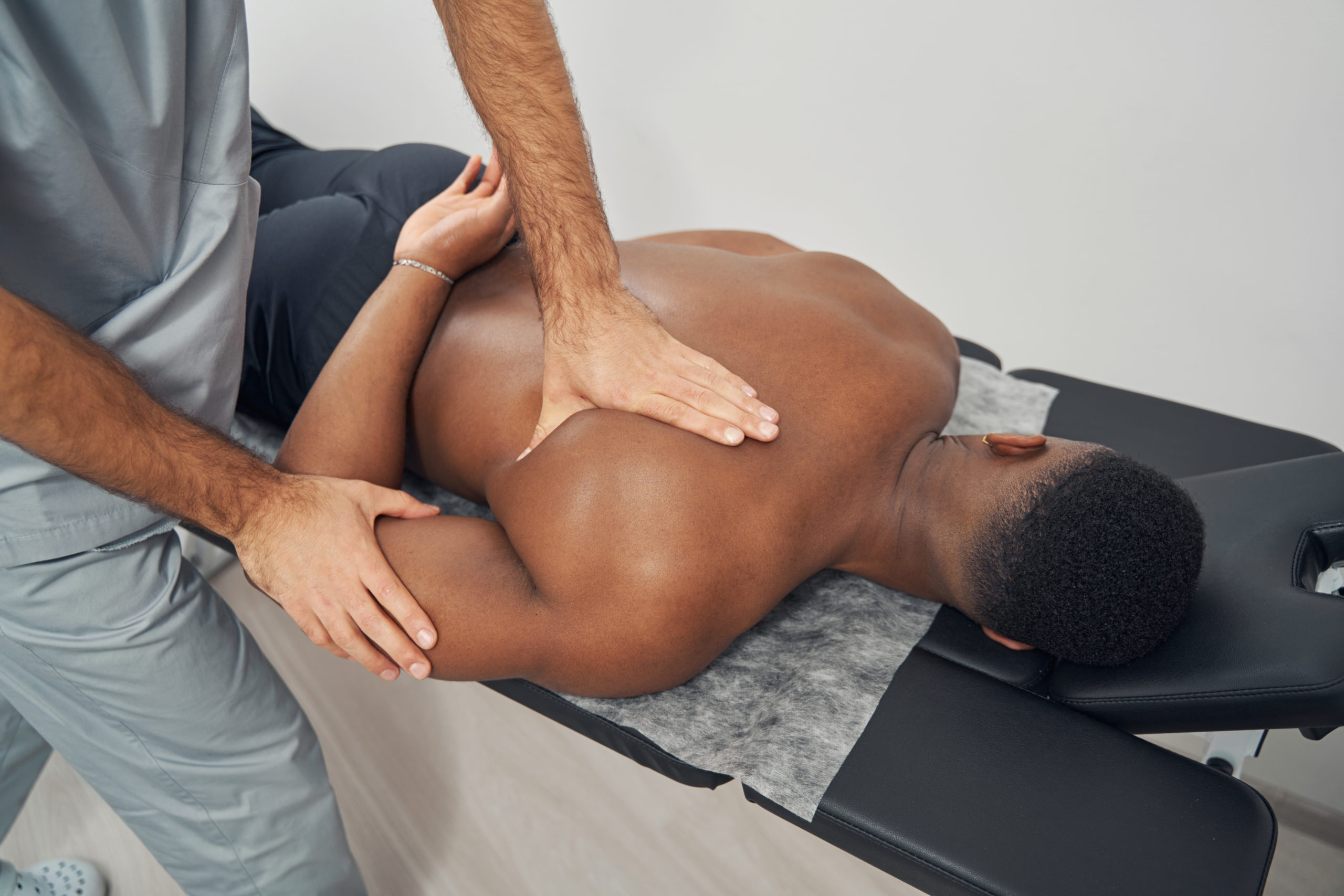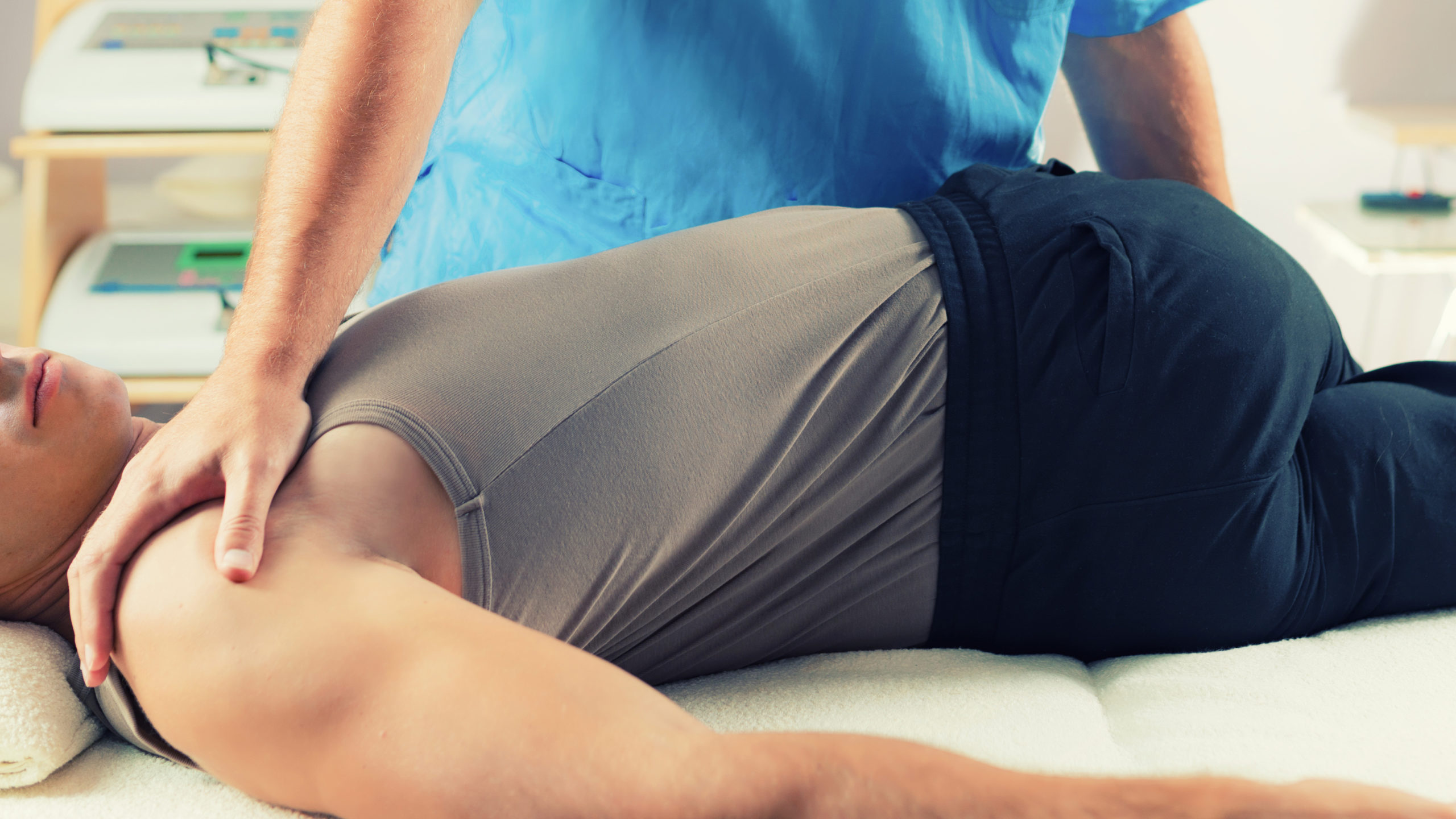What happens when a hole in one causes a world of hurt? Plenty of people need treatment for golf injuries in Denver. While golf isn’t considered a rugged sport, the mechanisms of the game actually create the perfect recipe for a variety of musculoskeletal injuries. Many common golf injuries are actually caused by things like improper mechanics and overuse.
It’s important to get treatment for a golf injury because what starts as a “little ache” can quickly turn into a big problem if you’re not addressing the underlying dysfunction. You might also want to consider using specific exercises for injury avoidance if hitting the links is part of your life. Take a look at the seven most common golf injuries that can get you out on the fairway.

1. Golfer’s Elbow
While golfer’s elbow isn’t just something that golfers experience, the condition earned this name because the movements used in golf make golfers more susceptible to this particular form of strain. Golfer’s elbow is a form of tendinitis. It creates pain in the area where the tendons of your forearm muscles attach to the bony part of the inside of your elbow. In some cases, the pain radiates through the forearm to reach the wrist. This injury is the inverse of tennis elbow pain that occurs on the outside of the elbow.
Many people with golfer’s elbow experience pain, tenderness, stiffness, weakness, numbness, and tingling. Golfer’s elbow is almost always the result of repeated stress. However, one forceful movement involving the hand or wrist can also trigger it.
2. Back Pain
Back pain isn’t exclusive to golfers. Close to 60% of Americans are currently living with back pain. However, golf can put you at higher risk due to the rotational stress caused by swings. Each swing places pressure on the spine and surrounding muscles. Pain in the lower back is especially common among golfers due to all of the time that’s spent in a bent stance during this sport. What’s more, spending four to five hours at a time doing repetitive movements is enough to cause strain.
3. Wrist Injuries
Golf’s repetitive motions done at high speed can put your wrists at risk! Many golfer’s experience pain and tenderness in the top portion of the wrist. You can even experience swelling in the tendons that help you make your wrist movements. While any form of overstretching when swinging can cause wrist pain, hitting the ground can create a serious impact that results in injury.

4. Neck Injuries
Your neck is more engaged than you think during golf. Several hours spent “stooping” and swinging can actually cause your neck muscles to shorten. When this happens, you can get everything from pain to spasms. Avoiding neck injuries during golf comes down to making sure your neck is properly aligned while relying on your shoulders and upper back instead of leading with your neck.
5. Hip Injuries
Swings require pivoting and twisting that put a surprising amount of pressure on the hip. It’s actually the flexion-extension forces that happen during a swing that are reasonable for most golf hip injuries. When you’re swinging, you’re exerting a high level of control over the muscles in the bottom half of your body. Unfortunately, the combination of rotational movements and force can easily cause strain if you don’t have an adequate level of flexibility.
6. Foot Injuries
The pressure of your feet pushing against the ground during golf movements can certainly cause injuries to the feet and ankles. It’s common for injuries to happen when a golfer loses their footing during any kind of rotational movement. Even making “correct” movements on an uneven surface can leave you with a surprise injury. It’s not all that uncommon to see everything from sprains to fractures among golf players. Don’t assume that you can’t have a sprained ankle just because you didn’t have a big fall! The pressure of your body weight falling onto one ankle due to a mismanaged move can be enough to cause a sprain.
 7. Shoulder Injuries
7. Shoulder Injuries
The shoulder and upper arm really take a big beating during golf. If your form isn’t absolutely perfect, something like an injured rotator cuff can occur. Shoulder injuries can happen from both overuse and traumatic force. In addition, tears, tendinitis, and bursitis of the shoulder are also relatively common among frequent golfers due to repetitive swinging.
How Do You Prevent Common Golf Injuries?
These seven injuries caused by swings should not dissuade you from keeping up with your love of golf. In fact, golf can be a great form of exercise that keeps you both mentally and physically sharp. Playing golf without injury is all about being smarter with every move.
If you’re already in pain from a golf injury, get the issue addressed right away to begin healing the area of the affected tissue. While some injuries will resolve on their own with some rest, taking steps to give the tissue what it needs for faster healing can ensure that you’re not stuck with a lingering injury that’s always flaring up. Here at Denver Chiropractic, Dr. Artichoker specializes in sports chiropractic.

Nobody should be waiting for a golf injury to happen before getting serious about form. If you’re a golfer, doing exercises to strengthen your muscles off the course is essential for preventing golf injuries. It can be especially important to make sure that your back, shoulders, and core are strong enough to keep your body in proper alignment during every swing. Additionally, you want to make sure that you’re using appropriate gear to ensure that you’re never compensating your movements due to a poor fit. Let’s get your golf injury checked out if you’re experiencing pain, discomfort, stiffness, inflammation, or some other clue that something went wrong on the links. Schedule an appointment with Dr. Artichoker here at Denver Chiropractic by calling (303) 455-2225 or booking online.

